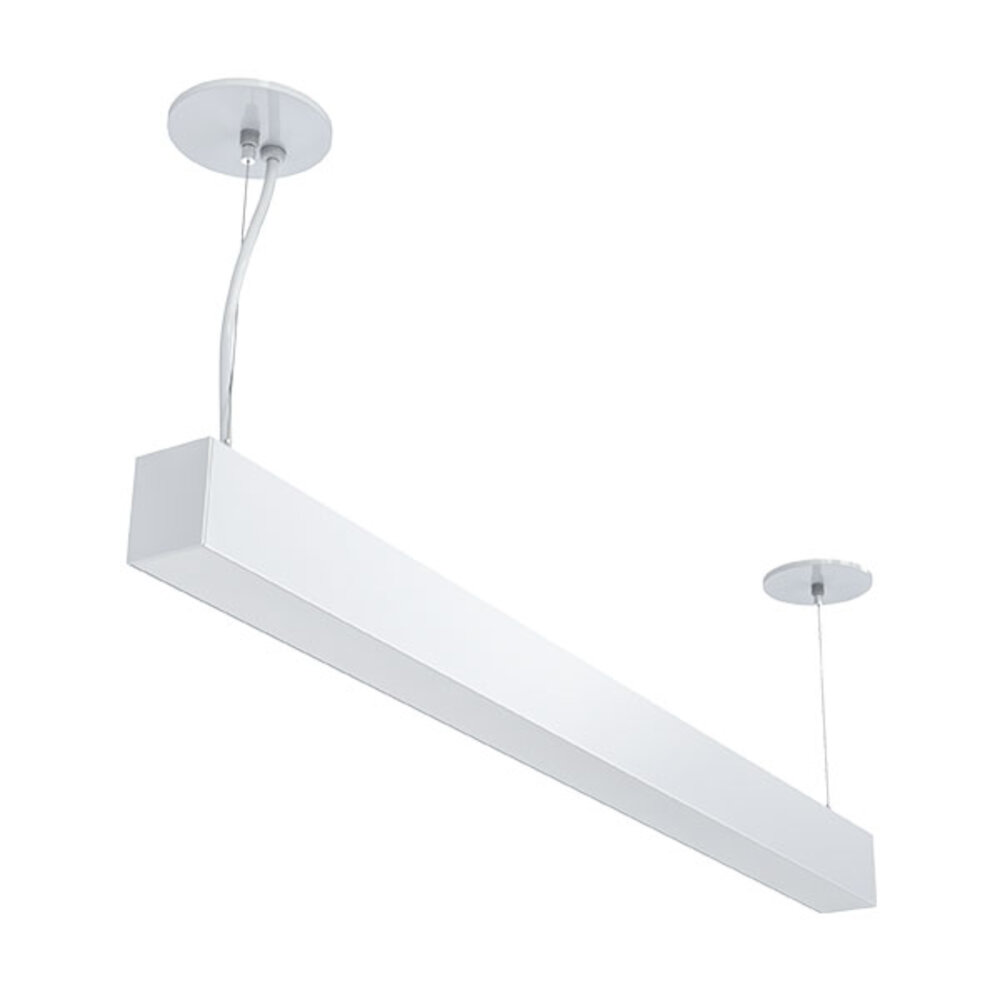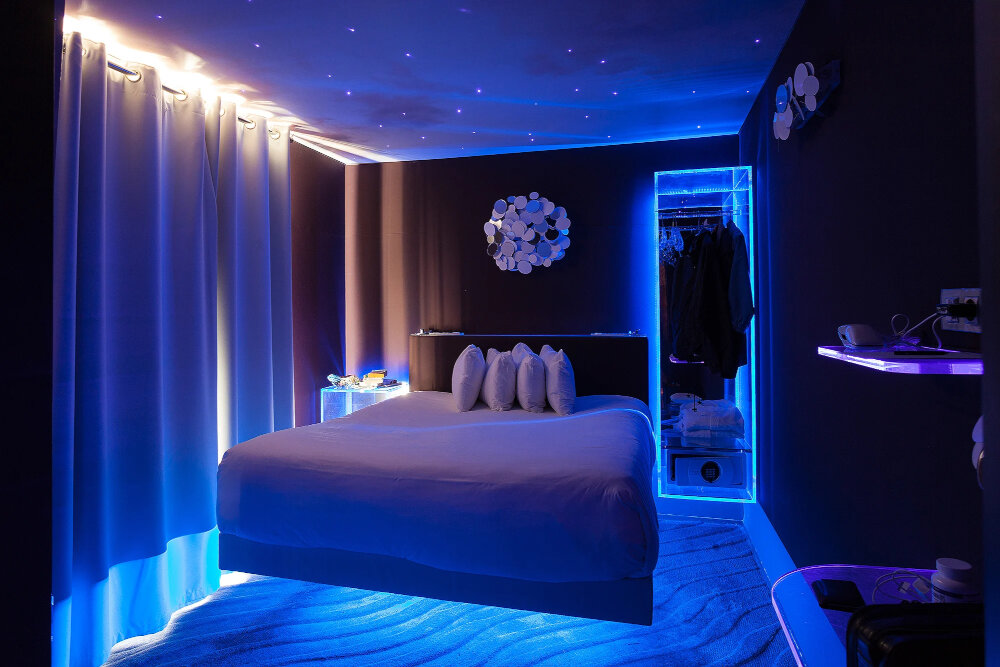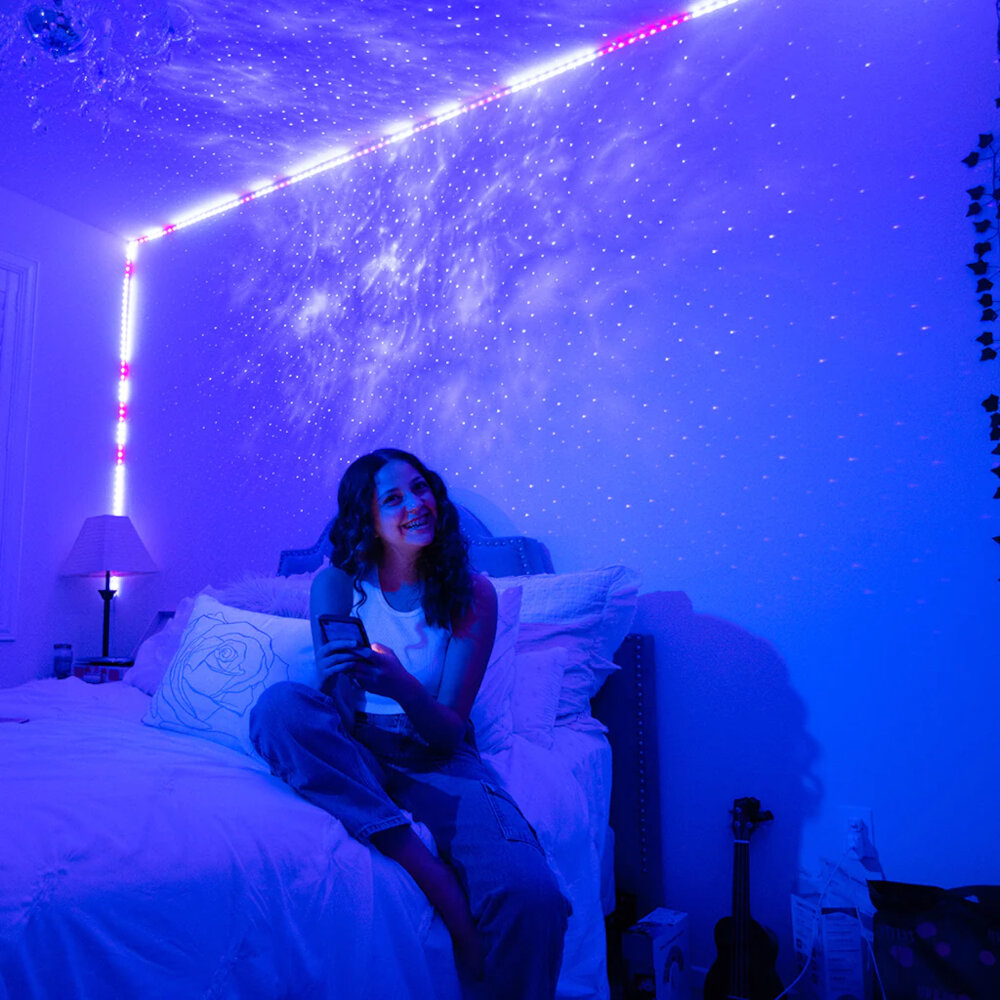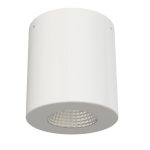LED Light Bulbs: The Ultimate Guide to Choosing the Best Ones for Your Home

Lighting is an essential aspect of any home or workspace. It not only enhances the appearance but also affects the mood and productivity of individuals. With technology advancing rapidly, LED light bulbs have emerged as one of the most popular lighting options for homes. LED bulbs are energy-efficient, long-lasting, and eco-friendly. They come in various shapes, sizes, and colors, making them a versatile choice for any setting. However, with so many options available, choosing the best LED bulbs for your home can be overwhelming. This ultimate guide will help you understand the features, benefits, and factors to consider when selecting the perfect LED light bulbs for your home. The benefits of LED light bulbs are numerous. They are more energy-efficient than traditional incandescent bulbs and can last up to 25 times longer. LED bulbs are also environmentally friendly as they do not contain any toxic elements like mercury, which can be harmful to the environment. Furthermore, LED bulbs emit less heat, making them safer to use and reducing the risk of fire. With their long lifespan, durability, and low maintenance, LED bulbs are also cost-effective in the long run. This guide will provide you with all the necessary information you need to choose the best LED light bulbs for your home, taking into account factors such as brightness, color temperature, and compatibility.
LED light bulbs are an innovative and energy-efficient lighting solution that has gained popularity in recent years. LED stands for \light-emitting diode,\ which is a semiconductor device that emits light when an electric current passes through it. Unlike traditional incandescent bulbs, LED bulbs do not rely on heating a filament to produce light, making them more efficient and long-lasting. LED bulbs come in a variety of shapes, sizes, and colors, and can be used in a range of applications, from household lighting to commercial and industrial lighting. They are also environmentally friendly, emitting less heat and using less energy than traditional bulbs, making them a great choice for anyone looking to reduce their carbon footprint and save money on their energy bills.
LED light bulbs are becoming increasingly popular due to their many benefits over traditional incandescent bulbs. One of the main advantages of LED bulbs is their energy efficiency. They use up to 80% less energy than incandescent bulbs, which means lower electricity bills and a reduced carbon footprint. LED bulbs also last much longer than traditional bulbs, with an average lifespan of around 25,000 hours. This means that homeowners can save money on replacement bulbs and reduce waste. Additionally, LED bulbs produce less heat, making them safer to use and reducing the risk of fire. Overall, switching to LED light bulbs is a smart choice for homeowners who want to save money, reduce waste, and improve safety in their homes.
Lumens and Wattage

When it comes to LED light bulbs, two essential terms you need to be familiar with are lumens and wattage. Lumens refer to the amount of light produced by the bulb, while wattage refers to the amount of electricity the bulb consumes. In the past, people used to choose bulbs based on wattage, which was an indication of the bulb’s brightness. However, with the introduction of LED bulbs, this is no longer the case. LED bulbs consume less wattage than traditional incandescent bulbs but produce the same amount of lumens or even more, making them more energy-efficient and cost-effective in the long run. Understanding lumens and wattage is crucial when choosing the best LED bulbs for your home. If you’re looking for a brighter light, you should choose an LED bulb with a higher number of lumens. On the other hand, if you’re looking for a more energy-efficient bulb, you should choose one with lower wattage. It’s worth noting that higher lumens don’t necessarily mean higher wattage, so it’s essential to consider both factors when making your decision. By choosing the right LED bulb based on lumens and wattage, you can create the perfect atmosphere in your home while saving money on your electricity bills.
When it comes to choosing the right LED light bulb for your home, lumens and wattage are two important terms to understand. Lumens measure the brightness of a bulb, while wattage measures the amount of energy it uses. In the past, people often used wattage as an indicator of brightness, but with the rise of energy-efficient LED bulbs, lumens have become the more accurate measure. A bulb with higher lumens will emit more light, while a bulb with lower lumens will emit less. Wattage, on the other hand, is important to consider if you want to save on energy costs. LED bulbs use less wattage than traditional incandescent bulbs, making them a more energy-efficient choice for your home.
Choosing the right amount of lumens for your space is crucial to achieving the desired lighting effect. The number of lumens you need will depend on the size of the room, the purpose of the lighting, and personal preference. As a general rule, a room with high ceilings or that requires bright task lighting will need more lumens than a smaller room or one that is used for relaxation. For example, a bedroom may only need 800-1,500 lumens, while a kitchen may require 3,000-4,000 lumens. It’s important to remember that lumens measure the amount of light emitted, but not the quality of the light. A higher number of lumens does not always mean better lighting. Consider the color temperature and color rendering index (CRI) of the light bulb to ensure the right ambiance and atmosphere for your space.
Wattage is a measure of the amount of electrical power a device consumes or produces. Understanding wattage is crucial when selecting LED light bulbs as it has a direct impact on energy consumption. LED light bulbs consume less energy than traditional bulbs, and their wattage is measured differently. Instead of measuring wattage in terms of power consumed, LED bulbs measure wattage in terms of the amount of light they emit. The higher the wattage, the brighter the bulb will be, but also the more energy it will consume. It is essential to keep in mind that choosing a bulb with the appropriate wattage for the intended space is crucial to maximize energy efficiency and save money on electricity bills.
Color Temperature

Color temperature is a crucial factor to consider when choosing LED light bulbs for your home. It is the measurement of the hue of a light source and is measured in Kelvins (K). A higher color temperature means the light appears bluer or cooler, while a lower color temperature gives off a warmer or yellowish glow. The right color temperature can significantly impact the mood and ambiance of a room. For example, a warm white color temperature (2700K-3000K) is perfect for creating a cozy and comfortable atmosphere in living rooms and bedrooms. In contrast, a cool white color temperature (4000K-5000K) is ideal for task lighting in kitchens and workspaces, as it provides a bright and energizing light that helps with concentration and productivity. It is also essential to consider the color rendering index (CRI) when selecting LED light bulbs. The CRI measures how well the light source displays colors compared to natural light. A higher CRI means that the colors appear more vibrant and accurate. When choosing LED light bulbs for your home, look for a CRI of 80 or above to ensure that the colors of your furniture, artwork, and decor are accurately represented. In conclusion, understanding color temperature and CRI is crucial when selecting LED light bulbs for your home. By choosing the right color temperature and CRI, you can create the perfect ambiance and ensure that your home looks its best.
Color temperature is a crucial aspect to consider when choosing the right LED light bulbs for your home. It refers to the color of light emitted by the bulb, and it is measured in Kelvins (K). The lower the number of Kelvins, the warmer and more yellow the light appears, while the higher the number, the cooler and bluer the light appears. For instance, a bulb with a color temperature of 2700K produces a warm and cozy light that is perfect for creating a relaxing atmosphere in the bedroom or living room, while a bulb with a color temperature of 5000K produces a brighter and cooler light that is ideal for task-oriented activities such as reading or cooking in the kitchen. Therefore, understanding color temperature can help you choose the right LED light bulbs that best suit your needs and preferences.
When choosing LED light bulbs for your home, it’s important to consider the color temperature. LED bulbs come in a range of temperatures, measured in Kelvin (K), that can affect the mood and ambiance of a room. Warm white (2700K-3000K) bulbs emit a cozy, yellow light similar to traditional incandescent bulbs and are perfect for bedrooms and living rooms. Cool white (3500K-4100K) bulbs emit a brighter, blue-white light often used in kitchens and bathrooms for its clarity. Daylight (5000K-6500K) bulbs produce a bright, bluish light similar to natural daylight and are great for task lighting in home offices or workshops. It’s important to consider the purpose of the room and the desired ambiance when selecting the color temperature of your LED bulbs.
Choosing the right color temperature for your LED light bulbs is essential in creating the ambiance you desire in your home. Warm white (2700K-3000K) is perfect for creating a cozy and relaxed atmosphere, ideal for bedrooms and living rooms. Cool white (3500K-4100K) is more suitable for task-oriented areas like the kitchen or study as it provides a brighter and more focused light. Daylight (5000K-6500K) is best for areas that require a lot of natural light, such as bathrooms and laundry rooms. It is important to consider the purpose of each space and choose the appropriate color temperature to enhance its function and aesthetic appeal.
Dimming Capabilities

When it comes to LED light bulbs, dimming capabilities are an important factor to consider. Dimming not only allows you to adjust the brightness of the bulb to your liking, but also helps to conserve energy and extend the lifespan of the bulb. However, not all LED bulbs are dimmable, so it’s important to check the packaging or specifications before purchasing. Additionally, not all dimmer switches are compatible with LED bulbs, so it’s important to ensure that your switch is designed for use with dimmable LED bulbs. Dimming capabilities can also vary between different types of LED bulbs. For example, some bulbs may have a limited dimming range or may flicker when dimmed. It’s important to choose a bulb that has a smooth and consistent dimming capability to ensure the best possible experience. Additionally, some LED bulbs may require a specific type of dimmer switch or may only be compatible with certain brands, so it’s important to do your research before making a purchase. Overall, dimming capabilities are an important feature to consider when choosing LED light bulbs for your home, as they can significantly impact the functionality and energy efficiency of your lighting system.
Dimming capabilities refer to the ability of LED light bulbs to adjust their brightness levels according to the user’s preferences or needs. This feature is particularly useful in creating different moods or atmospheres within a room, as well as in saving energy and extending the lifespan of the bulb. Dimmable LED bulbs can be controlled through various means, such as wall-mounted switches, remote controls, or smartphone apps. It is important to note that not all LED bulbs are dimmable, so it is important to check the product specifications before making a purchase. Additionally, not all dimmable bulbs are compatible with all dimmer switches, so it is crucial to ensure that the bulb and switch are compatible to avoid any potential issues with flickering or buzzing.
Understanding the various dimming options available for LED light bulbs is crucial when it comes to choosing the best ones for your home. There are three primary types of dimming: leading-edge, trailing-edge, and 0-10V. Leading-edge dimming is the most common and inexpensive method, but it may cause a buzzing sound and limited control. Trailing-edge dimming is more expensive but offers smoother control and less buzzing. 0-10V dimming is the most precise and versatile, allowing for a wide range of lighting levels and compatibility with automation systems. By understanding these different types of dimming, you can select the right LED light bulbs for your specific needs and preferences.
When it comes to choosing the right LED light bulbs for your home, it’s important to consider the dimming capabilities of the bulbs. Not all LED bulbs are created equal, and some may not be compatible with certain dimmer switches. It’s important to choose LED bulbs that are labeled as \dimmable\ and to ensure that they are compatible with your existing dimmer switch. Additionally, consider the type of dimming control you want for your space. Some dimmers offer smooth, gradual dimming while others may have preset levels or may only offer on/off functionality. By taking these factors into consideration, you can ensure that you choose LED bulbs with the right dimming capabilities to create the perfect ambiance for your space.
Bulb Shape and Size

When it comes to LED light bulbs, the shape and size of the bulb can play a vital role in how it illuminates your space. Bulb shape and size can affect the distribution of light, the angle at which it shines, and the overall aesthetic of the fixture. LED bulbs come in a variety of shapes and sizes, including A-shaped, globe, candle, and floodlight. A-shaped bulbs are the traditional bulb shape that is commonly used in lamps and light fixtures. Globe bulbs have a round shape and are often used in bathroom vanity lights or pendant fixtures. Candle bulbs have a narrower, tapered shape and are commonly used in chandeliers or candelabras. Floodlight bulbs have a wider, more directional beam and are often used for outdoor lighting or accent lighting. The size of the bulb can also affect how it illuminates a space. A larger bulb may provide more light output, but it may not fit in all fixtures. It’s essential to consider the size of the fixture and the space in which it will be used when choosing the right bulb size. Additionally, the shape and size of the bulb can affect how it looks in the fixture when it’s turned off. LED bulbs are available in a range of colors, including warm white, cool white, and daylight. The color temperature can affect the ambiance of a room, so it’s important to choose a color that complements the decor and the purpose of the space. By considering bulb shape, size, and color temperature, you can choose the perfect LED bulb to create the desired atmosphere in your home.
The shape and size of a bulb is an important factor to consider when choosing LED light bulbs for your home. The most common shape is the A-shape, which resembles a traditional incandescent bulb, but there are also other shapes available, such as globe, candle, and reflector. The size of a bulb is usually measured in millimeters and refers to the diameter of the bulb at its widest point. It is important to note that the size of a bulb does not necessarily indicate its brightness, as this is determined by the wattage or lumens. When choosing the right bulb for your needs, it is important to consider both the shape and size to ensure that it fits properly in your fixture and provides the desired amount of light.
When it comes to LED light bulbs, there are several different bulb shapes available on the market. The most common shapes include A-shape, which is similar to traditional incandescent bulbs and is ideal for general lighting; globe, which provides a decorative touch and is commonly used in vanity fixtures and pendant lights; candle, which mimics the look of a candle flame and is perfect for chandeliers and wall sconces; and reflector, which is designed to direct light in a specific direction and is commonly used in recessed lighting fixtures. Additionally, there are specialty shapes such as tube lights, which are great for under-cabinet lighting or task lighting, and vintage-style bulbs, which have a nostalgic look and are often used in decorative fixtures. With so many options available, it’s important to choose the right shape for your specific lighting needs.
When it comes to choosing the right LED light bulb for your home, it’s important to consider the shape and size of the bulb. The most common shapes include A19, BR30, and PAR38, each with unique features that suit specific lighting needs. A19 bulbs are the most traditional and versatile, suitable for general lighting in most rooms. BR30 bulbs are ideal for recessed or track lighting as they have a wider beam angle. PAR38 bulbs are great for outdoor lighting as they have a narrow beam angle and can withstand harsh weather conditions. Additionally, the size of the bulb should match the fixture to ensure proper fit and functionality. Always check the packaging or consult a professional to ensure you choose the right shape and size for your specific lighting needs.
When choosing LED light bulbs for your home, there are several key factors to consider. Firstly, you should take into account the brightness of the bulb, measured in lumens, and choose a level that suits the specific room and purpose. Secondly, the colour temperature of the bulb is important, as it can affect the ambience of a room. Warm white is typically used in living spaces, while cool white is better suited for task lighting. The lifespan of the bulb is also a vital consideration, with LED bulbs typically lasting longer than traditional incandescent bulbs. Finally, it’s important to consider the energy efficiency of the bulb, as this can impact both the environment and your wallet in the long term. By taking all these factors into account, you can ensure that you choose the best LED light bulbs for your home.
There are numerous benefits of using LED light bulbs over traditional incandescent bulbs. Firstly, LED bulbs are much more energy-efficient, consuming up to 80% less energy than incandescent bulbs. This translates into significant cost savings on electricity bills over time. Additionally, LED bulbs have a much longer lifespan, lasting up to 25 times longer than traditional bulbs. They also emit less heat, making them safer to use and less likely to cause fires. LED bulbs are also available in a variety of colors and styles, making them a versatile choice for any home lighting need. With all these benefits, it’s no wonder that more and more people are making the switch to LED bulbs.
After considering the various factors discussed, it is recommended that you choose LED light bulbs with a Color Rendering Index (CRI) of 90+ for optimal color accuracy. Additionally, bulbs with a color temperature between 2700K-3000K are recommended for a warm and cozy environment, while bulbs with a temperature of 4000K-5000K are ideal for task lighting. It is also important to consider the lumens output, particularly the brightness required for the space. Finally, look for LED bulbs with a long lifespan and energy efficiency to save on energy bills in the long run. By taking these factors into consideration, you can choose the best LED light bulbs for your space and enjoy their benefits for years to come.
Conclusion

In conclusion, LED light bulbs are an excellent choice for your home. They offer a range of benefits, including energy efficiency, long lifespan, and versatility in terms of color and brightness. When choosing the best LED light bulbs for your home, it’s important to consider factors such as the color temperature, lumens, and wattage. Additionally, you should look for bulbs with a high CRI to ensure accurate color rendering. By taking these factors into account, you can find the perfect LED light bulbs to create the ideal lighting environment in your home. So don’t hesitate to make the switch to LED and start enjoying the benefits of this innovative lighting technology today.




